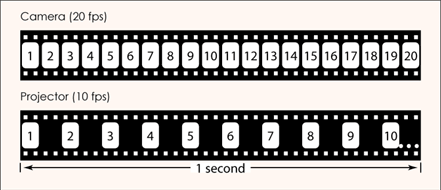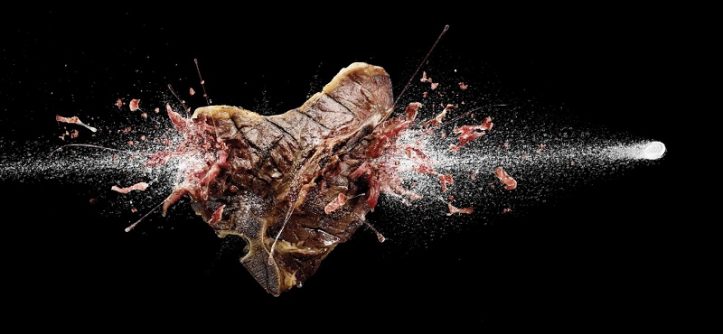Slow Motion is a long-time imaging technique. And is that who does not remember ‘Matrix’ and his scene in which Neo dodges the bullets as if time had stopped around him? This technique is now available to everyone, since everyday devices such as mobile phones or cameras offer us this possibility.
With the slow motion, we can capture scenes impossible to perceive by the human eye, something that allows us to give free rein to our creativity and imagination. Let’s see below what slow motion is and how we can take advantage of it to get the most amazing results.
What is slow motion?
Nowadays we are all accustomed to watching scenes in slow motion, either in the cinema or in sports broadcasts, but its origin dates back to 1904, when the priest and physicist August Musger (and lover of cinema) patented the first system of which we now know as slow motion.
This effect is obtained after recording a scene with a number of frames per second (frame rate) higher than the projection speed, thus, the scene is played at the same speed as a normal scene but gives the impression of developing more slowly because during the recording the record was much faster.
To be able to record in slow motion it is ideal that we use cameras prepared for it, because if we start of a video recorded in normal way, for example to 24 frames per second, however much we try to falsify a posterior with editing software that adds repeated frames, the results will never be the same.
Here it is interesting to emphasize that the human eye is only capable of interpreting sequences of 25 frames as something continuous, and that is why the standards in cinema are marked at 24 frames per second, since the higher capture rates allow us to perceive the illusion of fluid movement.
The reason these cameras are capable of recording at high speed (higher number of fps) lies in the high sensitivity of their photo sensors, able to capture light less time than a normal device. As we said at the beginning, now we also see this technology in mobile phones and soon will even come to them the super slow motion, specifically the hand of Sony and its sensors that incorporate their own DRAM. Below we can see a video recorded in slow motion mode with the Sony Xperia XZ Premium that reaches 960 fps per second.

Slow motion cameras
But let’s put aside the mobile phones (to which we will dedicate a section later) and return to the cameras. If we are really interested in the subject and want to have a team capable of delivering good results, we have in the market an interesting range of options to fit our needs and our pocket, because we are not going to fool ourselves, these types of cameras are not precisely economic conditions. Even so, we will see by ranks, which are the teams that give us the best result without losing sight of the binomial quality-price.
At the moment we find in the market cameras of different segments that allow us to record in slow motion, from compact to cameras of action
If we go to the semi-professional range one of the best cameras we can buy currently in the market for these needs is the Panasonic HC-X1, capable of recording high definition images at a high speed of 120 fps or 100 fps. We speak of a camera whose current price in the market is around 2800 dollars, so perhaps it is not a good option to start but for professionals.
In the event that our budget and our claims are smaller, we can opt for much more versatile and affordable action cameras such as GoPro Hero 5, capable of recording up to 120 frames per second and whose price is around a moderate 330 dollars.
Another camera that gives excellent results in slow motion is the Sony RX 100 Mark V, a compact advanced with an overwhelming burst speed and that is also capable of reaching up to 960 frames per second, although that, sacrificing quite the final quality of the image.
You may also like to read: Movavi Video Editor: A Great Windows Alternative to iMovie
Slow motion on mobile
Nowadays almost all the high-end mobiles of the market already have the possibility of recording in this mode, counting on a software capable of slowing the speed of reproduction, although at the moment and in spite of all the advances, the capacity of recording in slow motion for smartphones stays a little away from professional cameras.
In this type of device, the slow motion moves around 120-240 fps (except in some cases like the Sony Xperia XZ Premium that goes up to 960fps) in the video settings with a resolution of 720p. And what phones record with slow motion? As we said, virtually all “flagship” that crown the current market can record in this format.
Samsung’s brand new flagship Galaxy S8 allows us to record 240fps at 720p and the truth is that, as we could see in our analysis, the results it offers us are very interesting. Below we can see a video recorded with the Galaxy S8 at 240fps to 720p.
If we go to the direct competition of Samsung, we find that the iPhone 7 Plus offers us the ability to record at 720p at 120 or 30 fps, and like the Galaxy S8, 720p at 240 fps. The results are the same, although the results may vary due to the optical difference between the two.
Other phones like the Google Pixel, the LG V10 or the newly landed Xperia XZ Premium also offer this possibility, but what can we do in case our phone does not have it? In that case, there are software alternatives, since in the application stores we find some that, with greater or less success, can modify the speed of videos with “post production”. What these applications do is, on the one hand, slow the video playback and on the other, generate duplicate images to add frames, so logically the results will not be as good, but they can give a lot of play if we are not too demanding.
How to make the best slow motion
Once we are clear what will be the subject of our video there are some little tricks that, if we consider them, can ensure us an impeccable result. In the first place, and how could it be otherwise, we speak of light. And is that lighting is always the star in photography and video, but in the case of slow motion it is imperative that we record with good illumination, because at higher frame rates higher shutter speeds and consequently, we require a lighting more intense to be able to appreciate in detail the scene. If we do not have special luminaries to record, ideally we always record with the best possible natural light.
The second essential point is stabilization. An unstable slow motion recording may completely spoil the results, so it is very important that, as far as possible, we use tripod or in the case of the mobile, that we fix it with the stabilization system that we usually use.
Finally, we cannot forget the sound. And is that one of the characteristics of slow motion is the absolute lack of it, something that allows us to customize the videos with the sound we want. The ideal is to choose music according to and in line with the image represented as we can see in the previous video, which by the way, is part of the channel Slow Mo Lab, geniuses of the matter that yes, have the latest in this technology.
Squeezing the slow motion
The possibilities with this technique are endless, and is that we can achieve dramatic results and very attractive if we select well the protagonist object. Obviously, the interesting thing is to capture that whose movement is fast for the human eye, because to slow down something that already by itself is slow does not have greater sense. A few months ago, a video (recorded at 30,000 fps) of a corn kernel becoming a popcorn became viral, shows that in everyday we can find many actions sensitive to slow motion.
Under this premise, we have a horde of possibilities that can give us very interesting results. Let’s think about things that we cannot observe carefully because of their transience, such as rain, the flapping of a bird or a boy jumping in an elastic camera, and is that slow motion, like its opposite, time-lapse, open a world of visual possibilities with which we can unleash our creativity.
Tags: Slow motion




Leave a Reply